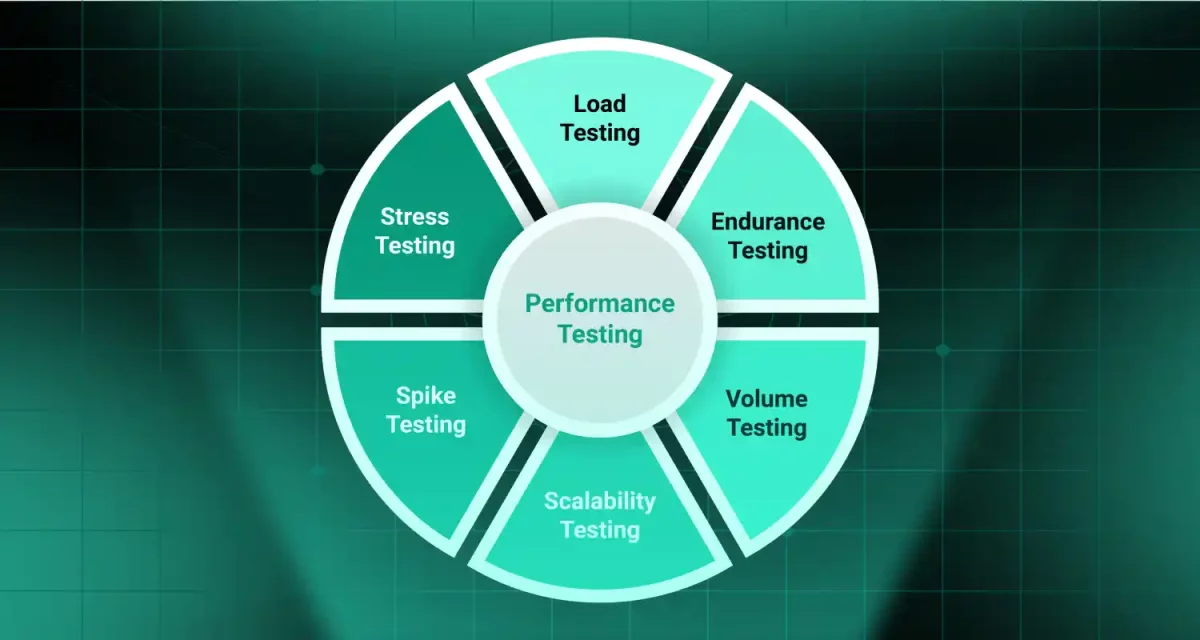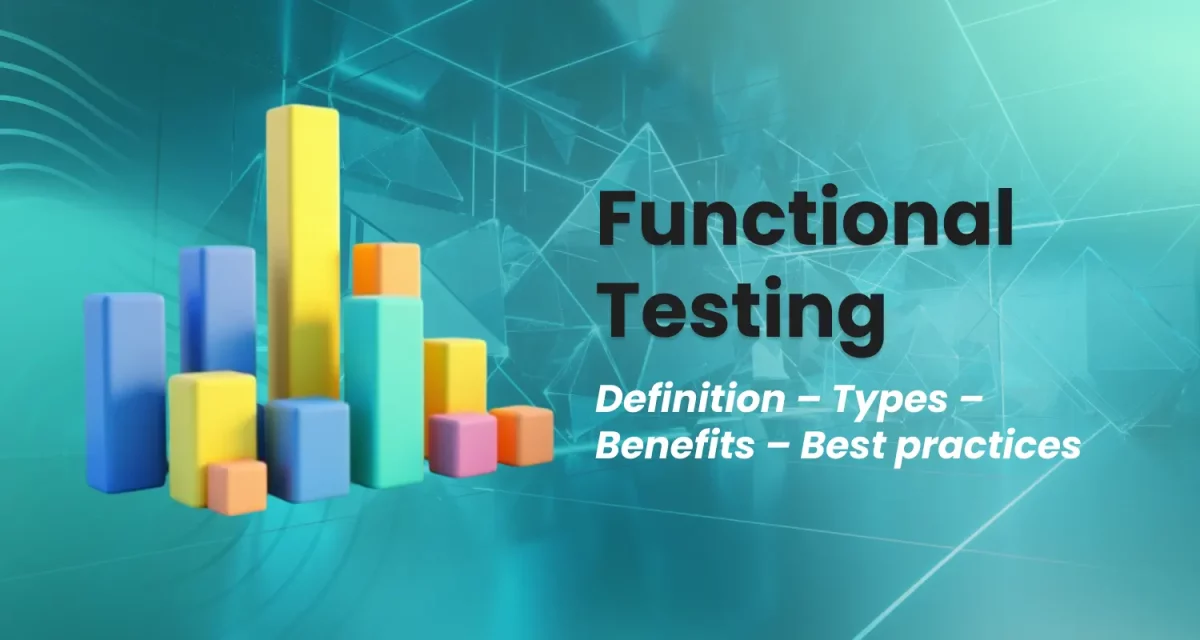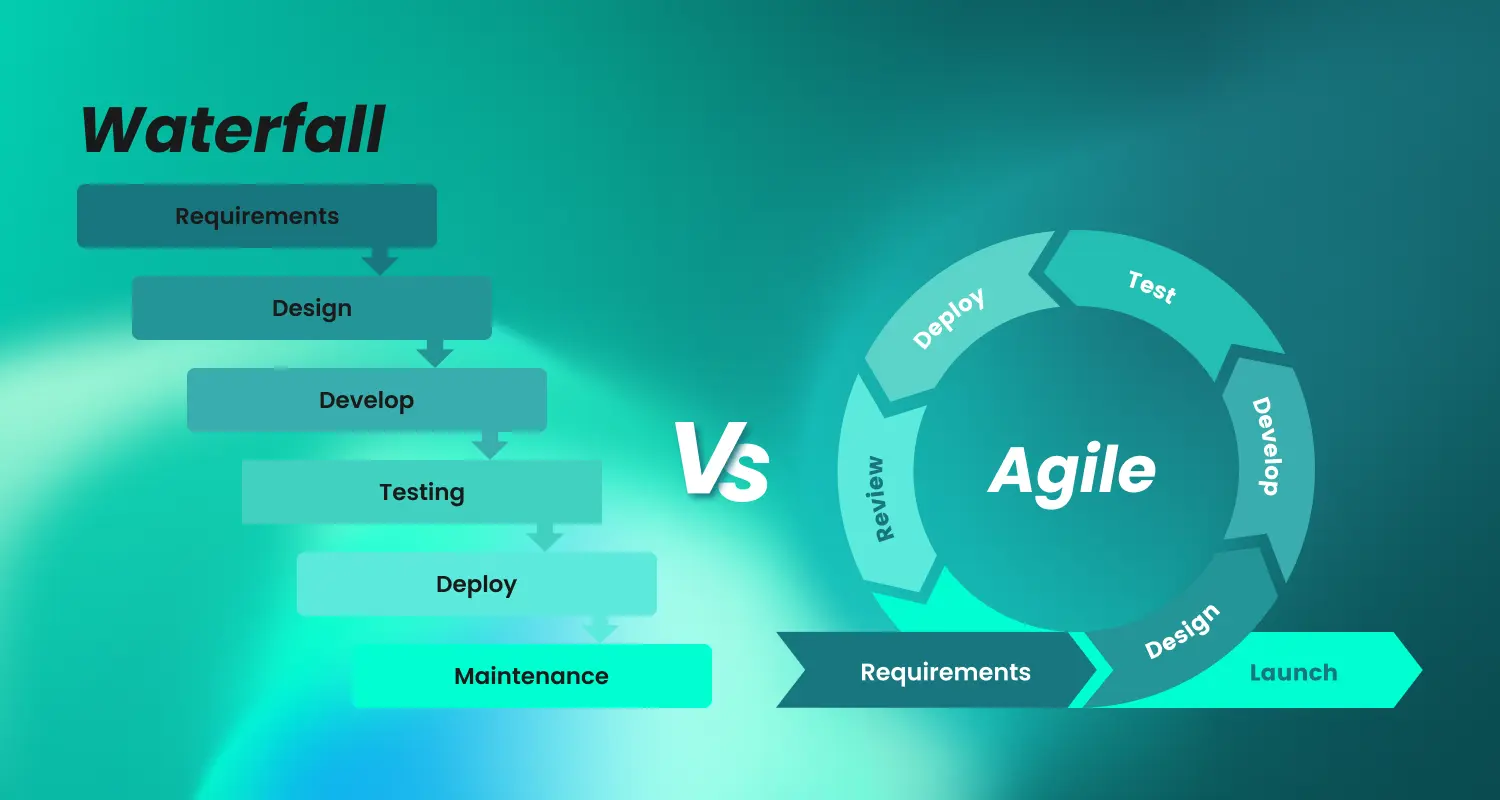 The choice of a software development methodology is a critical decision that can significantly impact a project’s success. With options like the structured Waterfall model and the flexible Agile approach, knowing which to choose is essential. Software development methodologies provide frameworks for creating software, ensuring organized and effective project execution.
The choice of a software development methodology is a critical decision that can significantly impact a project’s success. With options like the structured Waterfall model and the flexible Agile approach, knowing which to choose is essential. Software development methodologies provide frameworks for creating software, ensuring organized and effective project execution.
This post aims to provide a clear comparison of the Waterfall model vs Agile software development methodology, highlighting their differences, strengths, and ideal use cases, ultimately helping you make informed decisions for your projects.
1. Waterfall model
1.1. Defintion
The Waterfall model is a classic, linear approach to software development, where each phase of the project is completed sequentially, flowing down like a waterfall. It’s deeply rooted in the traditional Software Development Life Cycle (SDLC), emphasizing a structured progression from start to finish.
In essence, it’s a sequential development process where one phase must be entirely completed before the next can begin. This means requirements are gathered, then design is created, followed by implementation, testing, and finally, deployment and maintenance. There’s no back-tracking; each stage flows naturally into the next.
1.2. Key characteristics
The Waterfall model’s core design dictates its approach to software development, distinguishing it sharply from more adaptable methods. Its defining features are rooted in a strict, linear progression.
- Detailed planning upfront: Before any coding begins, the Waterfall model necessitates detailed planning. All project requirements are thoroughly documented and finalized, setting a fixed scope for the entire development process.
- Strictly sequential phases: The development process is divided into rigid, sequential phases. Each phase—from requirements gathering to deployment—must be completed before the next can begin. This ensures a structured progression, but limits the ability to adapt to changes.
- Limited flexibility: Once a phase is finished, reverting to previous stages for modifications is difficult and costly. This lack of flexibility makes the Waterfall model less suitable for projects where requirements are expected to evolve during development.
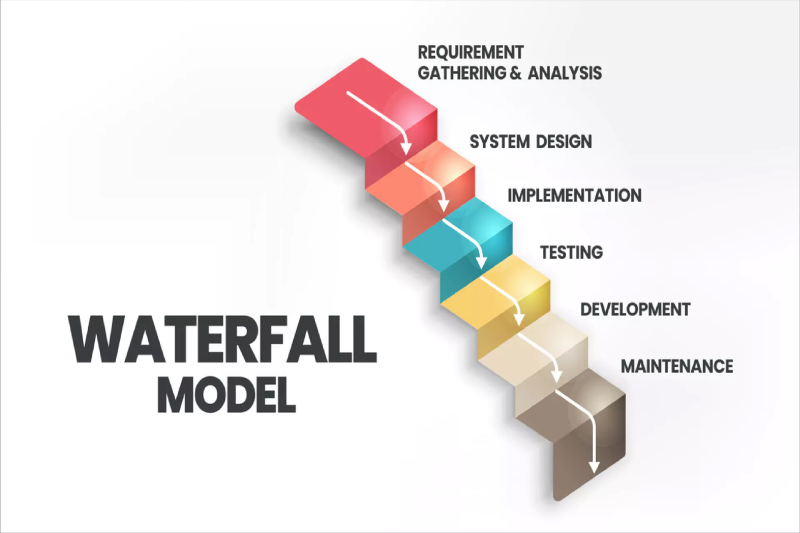
1.3. Advantages of the Waterfall model
While often contrasted with more adaptable methodologies, the Waterfall model offers distinct advantages, particularly in certain project contexts.
- Structured documentation: The sequential nature of Waterfall ensures thorough documentation at each stage. This creates a clear audit trail and facilitates knowledge transfer, which is valuable in projects requiring strict record-keeping.
- Predictable project outcomes: Detailed upfront planning allows for more accurate estimations of timelines and budgets. This predictability is essential for projects with fixed scopes and limited tolerance for deviations.
- Ideal for stable requirements: When project requirements are well-defined and unlikely to change, Waterfall provides a reliable and straightforward development path. This reduces the risk of costly revisions and ensures a focused development process.
1.4. Disadvantages of the Waterfall model
Despite its structured approach, the Waterfall model presents several limitations that can hinder project success, especially in dynamic environments.
- Lack of flexibility to adapt to changing requirements: The model’s rigidity makes it challenging to accommodate changes that arise during development, potentially leading to costly rework.
- Delayed testing and feedback: Testing occurs late in the development cycle, delaying feedback and potentially uncovering critical issues at the last minute.
- Risk of delivering a product that doesn’t meet evolving needs: If requirements change significantly during development, the final product may not align with the current needs of the market or users.
1.5. When to use the Waterfall model
While the Waterfall model isn’t universally applicable, it remains a strong choice for specific types of projects where its structured and sequential nature provides distinct advantages.
- Projects with fixed requirements and minimal changes: Ideal for projects where requirements are well-defined and stable.
- Projects where documentation is critical: Suited for projects where detailed documentation is essential for regulatory compliance or knowledge transfer.
- Safety-critical systems (e.g., Medical, Aerospace): Often preferred for systems where rigorous testing and documentation are paramount due to the high risk associated with errors.
- Project scope: When the project scope is clearly defined and unlikely to change.
- Risk management in software projects: When risks are well understood and can be mitigated through detailed planning.
2. Agile methodology
2.1. Agile model: An iterative, flexible approach
Agile methodology represents a paradigm shift from traditional, linear approaches like Waterfall. It’s an iterative and flexible approach to software development, emphasizing adaptability and responsiveness to change. Unlike Waterfall’s sequential flow, Agile embraces iterative development, breaking projects into smaller, manageable cycles called sprints. This allows for continuous feedback and adjustments throughout the development process, fostering flexibility in software development and ensuring the final product aligns with evolving needs.
2.2. Key characteristics
Agile methodologies are defined by a set of core principles that foster adaptability and collaboration, creating a stark contrast to traditional, linear approaches.
- Iterative development with short sprints: Agile projects are divided into short, time-boxed iterations (sprints), typically lasting two to four weeks. Each sprint focuses on delivering a working increment of the software.
- Emphasis on customer collaboration and feedback: Agile methodology prioritizes ongoing communication and collaboration with customers and stakeholders. Feedback is actively sought and incorporated throughout the development process.
- Adaptability to changing requirements: Agile is designed to accommodate changes in requirements, even late in the development cycle. This flexibility allows teams to respond to evolving market conditions and user needs.
- Continuous improvement: Agile promotes a culture of continuous improvement through regular retrospectives, where teams reflect on their processes and identify areas for optimization.
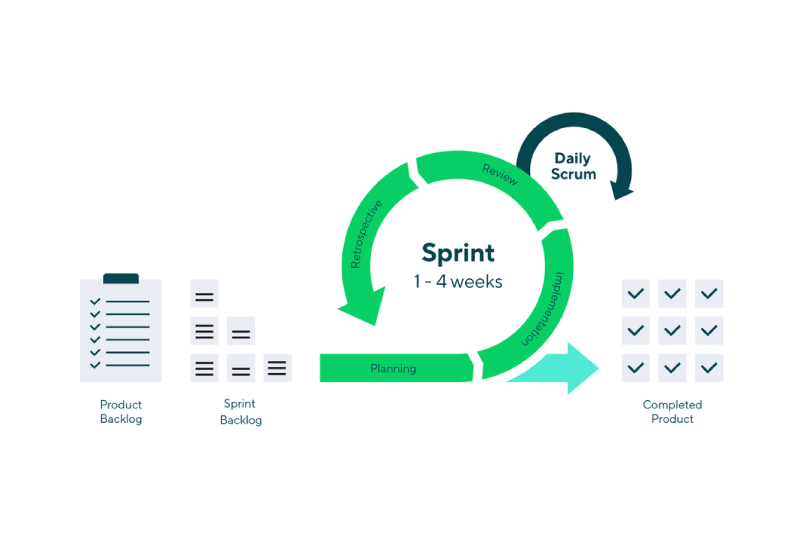
2.3. Advantages of Agile over Waterfall
Agile methodologies offer several compelling advantages over the Waterfall model, particularly in dynamic and customer-centric development environments.
- Increased flexibility and adaptability: Agile’s iterative nature allows for rapid adjustments to changing requirements, reducing the risk of delivering a product that doesn’t meet current needs.
- Faster time to market: By delivering working software in short sprints, Agile enables faster releases and quicker time to market.
- Improved customer satisfaction: Continuous customer collaboration and feedback ensure that the final product aligns with user expectations.
- Customer collaboration: Agile methods place a high value on continuous customer collaboration, which leads to better products.
2.4. Disadvantages of Agile methodology
While Agile offers significant benefits, it also presents challenges that need careful consideration, especially regarding planning and project management.
- Less predictable timelines and budgets: The flexibility of Agile can make it challenging to establish precise timelines and budgets, as requirements may evolve throughout the project.
- Requires strong customer involvement: Agile’s success relies on active and consistent customer participation, which may not always be feasible.
- Can be challenging for large, complex projects: Managing large, complex projects with numerous dependencies can be challenging in an Agile environment.
- Project management strategies: Agile requires a different project management strategy than waterfall, and some managers have trouble adapting.
2.5. When to use Agile methodology
Agile methodologies are particularly well-suited for projects that prioritize adaptability and rapid iteration, making them ideal in specific development scenarios.
- Projects with evolving requirements: Ideal for projects where requirements are likely to change or are not fully understood at the outset.
- Projects requiring rapid prototyping and feedback: Suitable for projects where rapid prototyping and continuous feedback are essential for validation and refinement.
- Projects where customer collaboration is essential: Preferred for projects where close collaboration with customers and stakeholders is critical for success.
- Continuous improvement: Projects that require a culture of continuous improvement.
- DevOps: Agile is a natural fit for DevOps environments, where continuous integration and continuous delivery are paramount.
- Lean methodology: Agile shares many principles with Lean methodology, such as eliminating waste and delivering value quickly.
3. Detailed comparison: Waterfall model vs Agile software development methodology

While both the Waterfall and Agile methodologies aim to deliver successful software projects, their approaches differ significantly. Understanding the differences between Waterfall and Agile is crucial for selecting the right methodology for your project.
Approach to planning and development:
- Waterfall: Follows a linear, sequential approach with detailed upfront planning. Each phase must be completed before moving to the next.
- Agile: Employs an iterative and incremental approach, breaking projects into short sprints with continuous planning and adaptation.
Flexibility and adaptability:
- Waterfall: Offers limited flexibility; changes are difficult and costly once a phase is completed.
- Agile: Highly adaptable to changing requirements and priorities, allowing for adjustments throughout the development process.
Customer involvement: - Waterfall: Customer involvement is typically limited to the initial requirements gathering and final delivery stages.
- Agile: Emphasizes continuous customer collaboration and feedback throughout the project.
Risk management: - Waterfall: Relies on upfront risk assessment and mitigation, with risks identified and addressed during the planning phase.
- Agile: Manages risks through iterative development and continuous feedback, allowing for early detection and mitigation of issues.
Documentation:
- Waterfall: Requires extensive and detailed documentation at each phase, emphasizing formal documentation.
- Agile: Focuses on working software over comprehensive documentation, with documentation created as needed.
Project management approaches:
- Waterfall: Traditional, plan-driven project management, focused on adherence to a fixed scope, schedule, and budget.
- Agile: Adaptive project management, focused on iterative development, collaboration, and responding to change.
|
Feature
|
Waterfall
|
Agile
|
|
Development approach
|
Sequential, Linear
|
Iterative, Incremental
|
|
Flexibility
|
Low
|
High
|
|
Adaptability
|
Limited
|
Extensive
|
|
Customer involvement
|
Limited, upfront and end
|
Continuous, throughout
|
|
Risk management
|
Upfront assessment
|
Iterative, continuous
|
|
Documentation
|
Extensive, formal
|
Minimal, as needed
|
|
Change management
|
Difficult, costly
|
Easy, welcomed
|
|
Project planning
|
Detailed, upfront
|
Iterative, ongoing
|
|
Timeline predictability
|
High
|
Medium to low
|
|
Budget predictability
|
High
|
Medium to low
|
4. Choosing the right methodology: Waterfall model vs Agile software development methodology
4.1. Factors to consider
Selecting the right methodology is crucial for project success. Several factors should be carefully considered to make an informed decision.
Project requirements and complexity:
- If requirements are well-defined, stable, and unlikely to change, Waterfall may be suitable.
- If requirements are evolving or unclear, Agile’s flexibility is advantageous.
- Complex projects with numerous dependencies may require careful planning and risk assessment, favoring a more structured approach or a hybrid.
Team experience and skills:
- Teams experienced with structured methodologies may find Waterfall more comfortable.
- Teams skilled in collaboration, iterative development, and rapid prototyping may excel with Agile.
- Teams with a mix of experience can use hybrid approaches.
Customer involvement: - If continuous customer collaboration and feedback are essential, Agile methodology is preferred.
- If customer involvement is limited or infrequent, Waterfall may be sufficient.
Budget and timeline constraints:
- Waterfall’s upfront planning allows for more predictable budgets and timelines.
- Agile’s flexibility can lead to less predictable budgets and timelines, but faster time-to-market in some cases.
When to use Waterfall vs. Agile:
- Waterfall: Use when requirements are fixed, documentation is critical, and safety is paramount.
- Agile: Use when flexibility is needed, customer feedback is essential, and rapid development is a priority.
4.2. Decision-making framework
To simplify the decision-making process, consider this simple checklist:
Checklist:
- Are requirements stable and well-defined? (Yes = Waterfall)
- Is flexibility and adaptability essential? (Yes = Agile)
- Is continuous customer collaboration required? (Yes = Agile)
- Is strict documentation and compliance necessary? (Yes = Waterfall)
- Is rapid prototyping a necessity? (Yes = Agile)
- Is time to market a priority over budget predictability? (Yes = Agile)
Alternatively, a simple decision tree could be used:
Decision tree:
- Start: Are requirements fixed?
- If Yes: Is documentation critical?
- If Yes: Use Waterfall.
- If No: Consider hybrid.
- If No: Is customer collaboration essential?
- If Yes: Use Agile.
- If No: Consider hybrid.
4.3. The importance of understanding project needs
Ultimately, the most critical step is to thoroughly understand your project’s specific needs, constraints, and goals. There is no one-size-fits-all solution. Carefully evaluate the factors mentioned above and choose the methodology that best aligns with your project’s unique requirements. A clear understanding of your project will lead to a better method selection, and ultimately a better outcome.
5. The bottom lines
Ultimately, choosing between the Waterfall model vs Agile software development methodology hinges on your project’s unique needs. Waterfall provides a structured path for stable projects, ensuring predictability, while Agile methodology offers flexibility and speed for dynamic environments. The key is to carefully assess your requirements and select the methodology that best aligns with your goals. We encourage you to share your experiences or questions in the comments below, and to explore our related articles for further insights into project management and software development.



